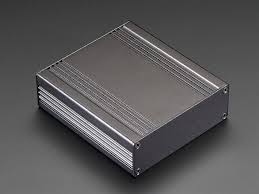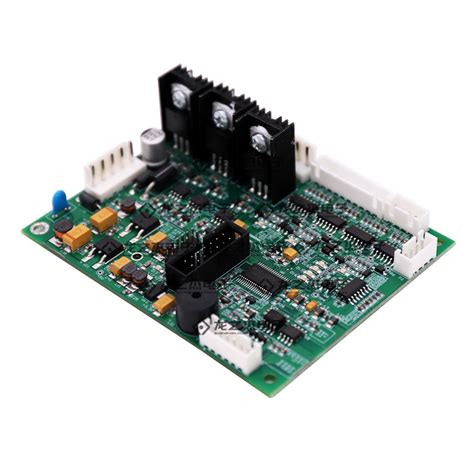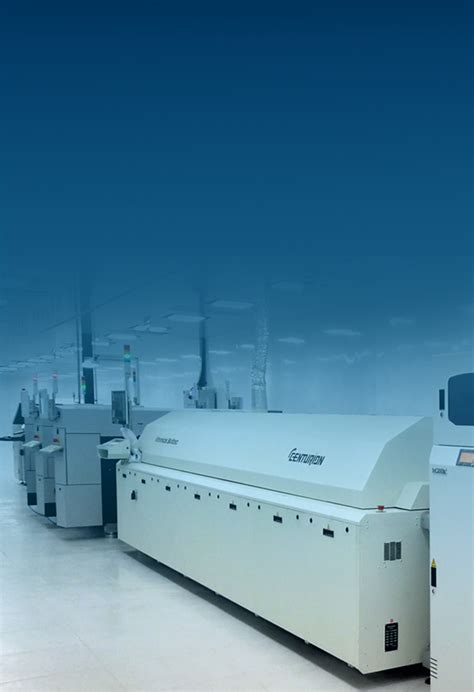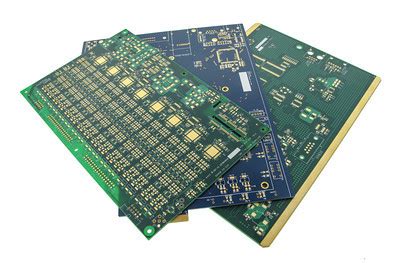Mastering Altium: A Guide to Multi-Board Assembly Success
Key Takeaways
Successfully implementing multi-board assembly in Altium hinges on grasping a few essential concepts. First, understanding the nuances of pcb assembly and the intricacies involved in combining multiple boards is crucial for achieving streamlined production. In the realm of pcba, the ability to set up your Altium project with clarity can significantly enhance your workflow. Utilizing techniques specifically designed for efficient multi-board projects can lead to improved design outcomes, reducing potential pitfalls that often derail progress. Collaboration among team members is another vital element; employing tools within Altium that promote open communication and shared insights will ensure that every member is aligned towards common objectives. Furthermore, optimising workflows not only facilitates a smoother assembly process but also mitigates typical challenges encountered in printed circuit board assembly. By adhering to best practices and adjusting for potential common obstacles, teams can refine their approach to multi-board designs and prototyping, setting up a robust foundation for successful projects that adhere to modern manufacturing demands and future trends in design automation. Understanding these key takeaways is essential in navigating the complexities of multi-board assemblies effectively.
Understanding the Basics of Multi-Board Assembly in Altium
When embarking on a project involving multi-board assembly, it’s vital to grasp the foundational concepts that govern the process within Altium. At its core, multi-board assembly refers to the integration of multiple printed circuit boards (PCBs) in a single system. This necessitates a comprehensive understanding of how each PCB interfaces with others, as well as how they collectively fulfill designated functions.
In Altium, users can benefit from features designed specifically for pcb assembly, which streamline the design process. For instance, defining clear communication protocols between boards can drastically improve design efficiency. A properly structured design hierarchy allows for easier maintenance and modifications, which is crucial in any pcba project.
| Aspect | Importance |
|---|---|
| Design Hierarchy | Maintains organizational clarity |
| Communication Protocols | Enhances inter-board interactions |
| Layer Management | Optimizes routing and reduces interference |
Moreover, leveraging component placement according to the specific constraints of each board and their collective layout can enhance assembly efficiency and reduce manufacturing errors. Utilizing Altium’s built-in tools for verification can preemptively address potential issues that may arise during multi-board assembly.
By understanding these elements early in the design stage, teams can establish a solid foundation for their project, fostering better collaboration and ultimately leading to a more successful pcba outcome.
Setting Up Your Altium Project for Multi-Board Success
Successfully setting up your Altium project is crucial for effective multi-board assembly. Begin by ensuring that you have a clear understanding of your project’s requirements before diving into the PCB assembly process. It’s important to create a well-structured project file that reflects your design hierarchy, incorporating all the boards you’ll be working with. Utilize multi-board design tools in Altium to manage interconnectivity between different PCBA components efficiently. Create schematic sheets for each board and be sure to set up shared components to minimize redundancy and maintain consistency throughout the design.
Leveraging design templates can greatly enhance your workflow, allowing you to replicate successful layouts and avoid starting from scratch every time you initiate a new project. Additionally, consider creating separate libraries for components that will be used across multiple boards; this helps streamline updates and reduces the risk of errors during changes. By establishing clear naming conventions and organizing your files logically from the outset, you will facilitate better collaboration among team members and ensure a smoother transition through each phase of the assembly process.
Remember to regularly review your project’s setup before moving into the detailing stages to ensure that all information is accurate and compliant with manufacturing standards, positioning you for successful multi-board projects ahead while optimizing your resources effectively.
Essential Design Techniques for Efficient Multi-Board Projects
Designing multi-board assemblies requires a strategic approach in Altium to ensure effectiveness and efficiency. One of the first steps is to establish a clear pcb assembly strategy that focuses on modular design principles. By breaking down complex systems into smaller, manageable units, designers can streamline the pcba process, thereby reducing potential errors during assembly. Utilizing hierarchical design techniques not only enhances clarity but also facilitates easier modifications later in the development cycle. It’s crucial to define robust interconnections between boards early on, as this directly impacts both functionality and manufacturability.
Incorporating the latest features in Altium can enhance collaboration across teams involved in PCB design. Integrated communication tools within Altium allow for real-time feedback and updates, minimizing miscommunication and fostering a shared understanding among team members. Furthermore, maintaining consistent documentation throughout the design lifecycle ensures that all stakeholders have access to vital information about component specifications and board configurations.
Lastly, running simulations can be an invaluable technique to identify potential issues before physical assembly begins. This proactive approach not only saves time but also minimizes costs associated with rework during the pcb assembly phase. Adopting such comprehensive techniques will lead to more efficient multi-board projects and create a foundation for success in complex electronic designs.
Enhancing Collaboration Among Teams in Altium
Effective collaboration among teams is crucial for successful multi-board assembly in Altium. When multiple teams work together, it’s important to ensure that communication flows smoothly and that everyone is aligned on the project’s goals. Utilizing tools available within Altium, such as project management features and version control, can significantly enhance teamwork. For instance, using PCB assembly software capabilities allows team members to share their designs in real-time, ensuring that feedback is immediate and adjustments can be made swiftly.
One effective strategy to foster collaboration is the establishment of regular check-in meetings. These meetings serve as a platform for team members to discuss progress on their respective tasks related to PCBA and highlight any potential challenges they might be facing. Furthermore, adopting a shared documentation system can minimize miscommunication by providing a single source of truth for all project files and updates.
“Clear communication is the bedrock of successful collaboration.”
By encouraging open dialogue and proactive problem-solving, teams can significantly reduce errors and misalignments during the design process. Establishing roles early on also helps delineate responsibilities, ensuring that everyone knows their contributions toward achieving multi-board project objectives. With the right mindset and tools in place, organizations can streamline their workflows and drive efficiency in their multi-board assembly initiatives.
Optimizing Workflows for Seamless Multi-Board Assembly
Efficient multi-board assembly requires a well-optimized workflow, which can significantly enhance the overall quality and effectiveness of your PCB assembly processes. By streamlining your design and fabrication stages, you can better coordinate tasks among team members while minimizing errors. One essential technique is to adopt a modular approach to PCB design, allowing each component or board to be developed independently yet integrated seamlessly into the final product. Utilizing advanced features within Altium can further improve communication and collaboration among various teams involved in the PCBA process. This includes tracking design changes in real-time and employing version control systems to maintain an up-to-date overview of project specifications. Additionally, implementing standardized templates for common designs helps reduce setup time and facilitates quicker adjustments when encountering unexpected challenges. Furthermore, integrating simulation tools alongside drafting capabilities enables early detection of potential issues, ensuring that changes can be made prior to fabrication. Overall, focusing on these methodologies will lead to more organized workflows and ultimately result in a smoother multi-board assembly experience.
Common Challenges in Multi-Board Assembly and How to Overcome Them
When engaging in multi-board assembly, several challenges may arise that can hinder the efficiency of your PCB assembly process. One common issue is the complexity of managing multiple PCBA systems simultaneously, where design mismatches can lead to costly errors. To mitigate this, it’s important to establish an organized approach to your projects. Ensure that each board’s design is well-documented and version-controlled, allowing for smooth transitions and easy updates.
Another challenge involves maintaining effective communication among teams, especially when various departments are responsible for different components of the assembly. Implementing a unified platform for collaboration can significantly streamline workflows. Utilizing team-based tools within Altium helps to centralize information, making it accessible for all stakeholders involved in the project.
Additionally, dealing with supply chain discrepancies can pose a significant hurdle; components may not arrive as expected or in the necessary quantities. To overcome this, proactive planning and establishing relationships with reliable suppliers are crucial. Monitoring inventory levels closely ensures that your multi-board assembly progresses without delays.
Lastly, testing multiple boards simultaneously can be resource-intensive. Employing modular testing methods can enhance efficiency by allowing individual sections of a project to be validated in batches without waiting for the entire assembly process to be completed. By addressing these challenges strategically, teams can improve their success rates in multi-board projects and product development timelines significantly.
Best Practices for Testing and Prototyping Multi-Board Designs
When it comes to multi-board assembly, effective testing and prototyping are paramount to ensure the reliability of the final product. First and foremost, develop a comprehensive testing plan that addresses all critical aspects of your design. Begin by creating a prototype that reflects the actual layout and connections of your design, paying careful attention to PCB assembly techniques. Utilizing simulation tools available in Altium can help identify potential issues before physical prototyping begins, which can save both time and resources.
It’s essential to set up a structured process for performing tests on individual boards as well as on integrated systems. Implementing unit tests for each board follows by integration testing will help verify that various components communicate seamlessly with one another. Additionally, consider using automated testing frameworks to streamline this process, making your testing both thorough and efficient.
Moreover, document all findings meticulously during prototyping. This documentation will not only streamline communication among team members but also provide a solid foundation for future iterations of the PCBA project. Lastly, be open to feedback from cross-functional teams; their insights can lead to significant improvements in design quality and functionality in subsequent versions. Adhering to these best practices will enhance the likelihood of delivering successful multi-board designs that meet both performance specifications and expectations.
Future Trends in Multi-Board Assembly and Design Automation
As the electronics industry continues to evolve, the future of multi-board assembly (MBA) is increasingly influenced by advancements in design automation. The integration of design software with artificial intelligence and machine learning is reshaping how PCB designs are conceptualized and executed. One significant trend is the push towards more intelligent routing algorithms that enhance PCB assembly processes. These algorithms can analyze complex circuit designs, automatically optimizing layout for reduced production costs and improved efficiency in pcba.
Additionally, as collaborative tools are becoming more sophisticated, teams can work simultaneously on different aspects of a project, fostering a more integrated approach to multi-board projects. Cloud-based platforms enable real-time updates and feedback, aligning efforts across various teams regardless of geographical boundaries. This shift not only improves communication but also accelerates the lifecycle from design to production.
Another emerging trend is the increased focus on sustainability in pcb assembly processes. Manufacturers are exploring eco-friendly materials and methods that minimize waste while maintaining high-quality standards. Techniques such as modular design are gaining traction, allowing for easier upgrades and maintenance of multi-board systems over their lifecycle.
Ultimately, the synergy between multi-board assembly, automation technologies, and sustainable practices will define the next generation of electronic devices, enhancing both functionality and efficiency in an increasingly competitive landscape.
Conclusion
In navigating the complexities of multi-board assembly within Altium, it becomes evident that a strategic approach is paramount for achieving desired outcomes in pcb assembly. Successful pcba hinges on a comprehensive understanding of both the tools at your disposal and the intricacies of collaboration among team members. As we have explored throughout the guide, optimizing workflows not only streamlines design processes but also enhances overall efficiency in handling multiple boards. Moreover, addressing common challenges head-on equips teams with the resilience needed to overcome obstacles that may arise during project execution. By implementing best practices for testing and prototyping, designers can further ensure that each board harmonizes seamlessly within the larger context. Looking ahead, staying attuned to future trends in multi-board assembly will be crucial for effectively adapting to evolving technologies. Embracing these techniques will ultimately set a foundation for success in any multi-board project within Altium.
FAQs
What is multi-board assembly in the context of PCB design?
Multi-board assembly refers to a process in which multiple PCB assemblies (PCBA) are designed and manufactured as a cohesive unit. This approach is essential for complex electronic systems that require integration across various PCBs.
How can I streamline my Altium project for multi-board assembly?
To optimize your project in Altium, utilize features like project management tools, which allow for better organization of multiple boards. Frequently check for design rule violations across all PCBs, ensuring compatibility and efficiency in the overall assembly.
What are common challenges faced during multi-board assembly?
Common challenges include ensuring proper mechanical alignment, managing varying signals, and addressing thermal issues. Careful planning during the design phase can help mitigate these obstacles, leading to smoother production.
What best practices should I follow for testing and prototyping my multi-board designs?
Implement thorough testing protocols throughout the design process, such as using prototyping techniques to validate connections between the PCB assemblies. This can help identify issues early, reducing costly fixes later on.







